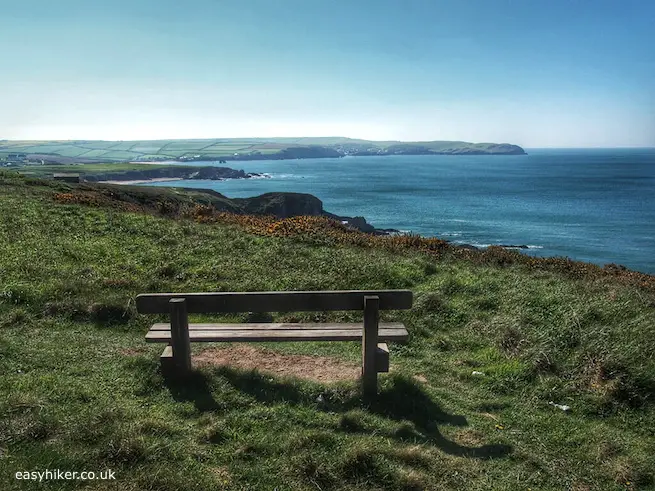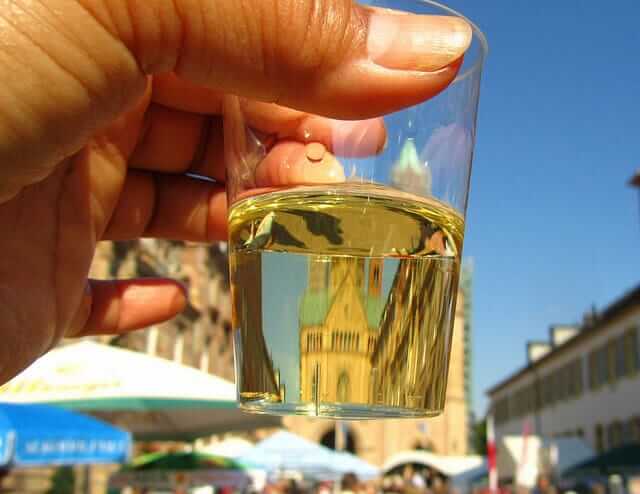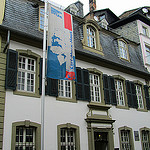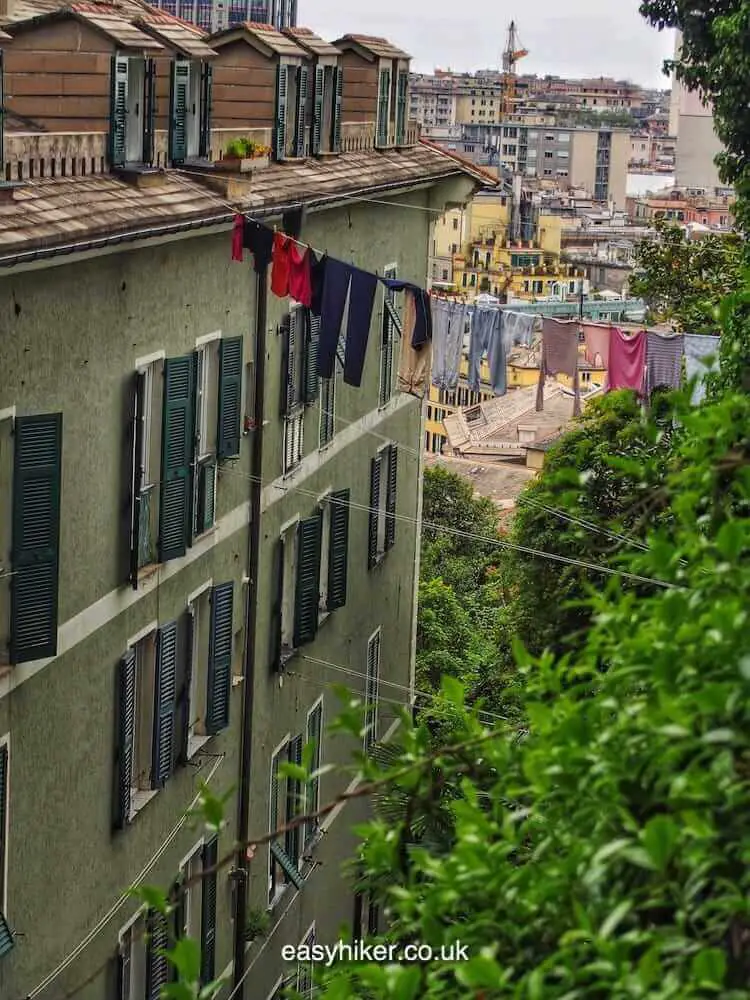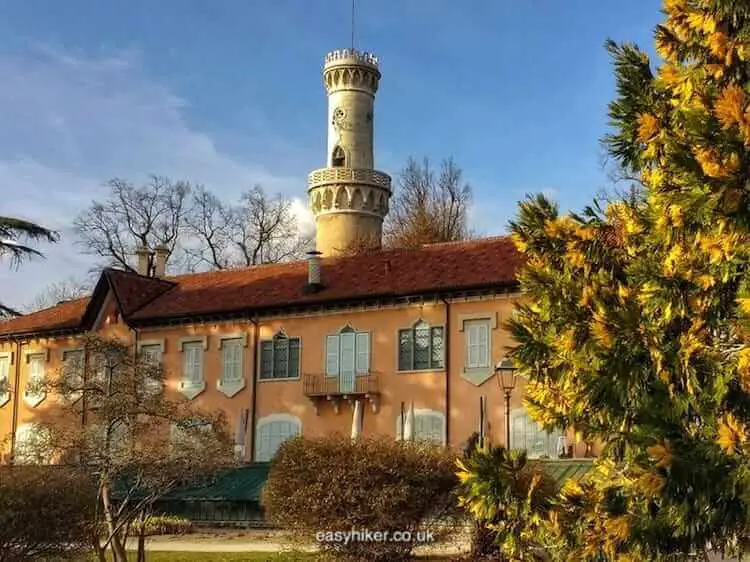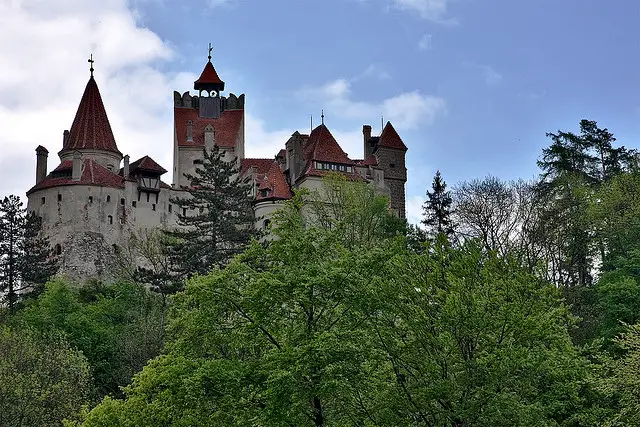The Altes Land, a few kilometres outside of Hamburg, is Europe’s largest fruit orchard. More than 10 million cherry and apple trees are growing here on the southern bank of the Elbe river, inviting you to stroll through a sea of colour and scenic beauty.

That was what we had in mind when we boarded a city rail train (line S3 in the direction of Stade), descended at Neukloster – the station nearest to the Altes Land – and began to walk towards Jork, the picturesque village in the heart of the fruit-growing country.
When did it dawn on us that we had done the hiking equivalent of placing our bet on a handsome-but-lame horse?
Pretty early, as a matter of fact. Soon after we got off the train, we took this photo …

… and ten minutes further down a busy two-lane highway, we realized that this was pretty much everything this hike would have to offer, at least for the next hour and quite possibly for the hour after that.
Because two hours was how long it would take us to reach Jork, and as far as the eye could see into the distance, there was only car traffic and grain fields with no hope for a change in scenery. (At least, a dedicated cycling-and-hiking lane ran by the side of the highway. If this had been Italy, we would be dead.)
It took us about an hour and a half to reach the first fruit trees. They were not in blossom, of course – even I with my limited knowledge of all things agricultural had suspected as much, but what I had not known was that you cannot walk in between the trees, blossoming or not.
This is a commercial operation, after all, not the Municipal Park – and besides, the trees are so narrowly spaced that they would block out any view: you would get the same amusement from walking through a corn field.
In fairness, however, it must be said that, from a distance, the apple plantations can exude a certain charm, particularly if a body of water sneaks into the picture.

You will know that you have reached the outskirts of Jork when you spot the first information panels by the roadside.
These panels have been erected by the municipal tourism office to give visitors a feel for the history and the traditions of the place. Clearings like this, for example, …

… were created for harvest workers so they could take their lunch and tea breaks.
These panels also gave us the first firm indication that there were better hiking options than the one we had picked. There are 25 such information panels in and around Jork, and together, they form a route of about 2 miles in length.
That surely sounded a lot more fun than our long schlep down the Hamburg interstate. If you want to go to Jork directly, there is an hourly bus (line no. 2030) from Buxtehude, a stop on the S3 from Hamburg.
For us, at any rate, there was no more time or energy for such a long tour: we just took a little walk by the Hauptwettern canal …
A Walk to See Apple Trees, Windswept Dikes and the Charms of Palookaville

… and past the brick church of St Matthew’s with its slate-roofed wooden tower.

I had never seen a church tower like that. But hey: a mere 30 minutes later, on our walk to the old port of Borstel, we would spot a virtually identical one.

This short walk to Borstel – a little over one kilometer long – turned out to be the most scenic and interesting part of our hiking day.
There are many picturesque houses on the Kleine Seite, the lane on the left hand side of the canal, …

… and the historic Borsteler Hafen at the end of the road is a hafen of tranquility and an ideal place for a short rest.

For hundreds of years, most of the fruit that was harvested in the Altes Land would have been shipped from here to the transport hubs of Hamburg. After WWII, the port fell into neglect, but more recently, a group of local citizens has restored some of the old installations and acquired an old-style sailing barge – a so-called tjalk – to complement the scenery.
A few steps away, a 19th century windmill – now a restaurant and a museum – stands right by the dike: what could be a more typical North Sea coast scenery?

When the windmill was built in 1856, however, the dike was not nearly as high as it is today: it was heightened and strengthened after the North Sea flood of February 1962 had devastated the entire area, flooding half of Hamburg’s city centre and destroying 60,000 homes.
All over this part of Germany, residents – including those who were not even born when disaster struck – still live in the shadows of these events from 50 years ago.
Jork, too, reminds you how high the water rose on that fateful winter’s day.

From the Borsteler Hafen, you can – if you have taken an early bus to Jork and therefore still have the entire afternoon ahead of you – continue your hike in the direction of Cranz for the Estedeich and more windswept coastal romantics.
This is what we would have done if we could have turned back time: not least to take a peek at the Neßsand island, the German nature reserve with the strangest background story of them all.
This artificial island in the middle of the Elbe river was created in 1942 to provide space for a match factory’s tree plantation. While the trees never took root in the sandy soil, birds – including some rare species – and unique plants found a perfect environment here, and the Neßsand became a protected zone a mere 10 years after its creation.
Visitors are only admitted once a year, when a boat is allowed to cross over on Urban Nature Open Day in mid-June.
If you hike towards the Este Dike, you can, for your return to Hamburg, take the hourly ferry from Cranz to Blankenese (which is a stop on the S1 city rail line). We, short of time, took the bus to Buxtehude instead. (There is a bus stop – line 2030 again – right by the Borsteler Hafen.)
In German, Buxtehude’s name is also used as shorthand for a uniquely dull place, the equivalent of Palookaville, so we did not expect much. The town, however, turned out to be very pretty – and that was not our only surprise.
We had no idea, for example, that Buxtehude was the place where the famous race between the hedgehog and the hare took place, if you believe the Grimm brothers’ Fairy Tales or Wilhelm Schröder who before that had included the story in his collection of fables from lower Germany.
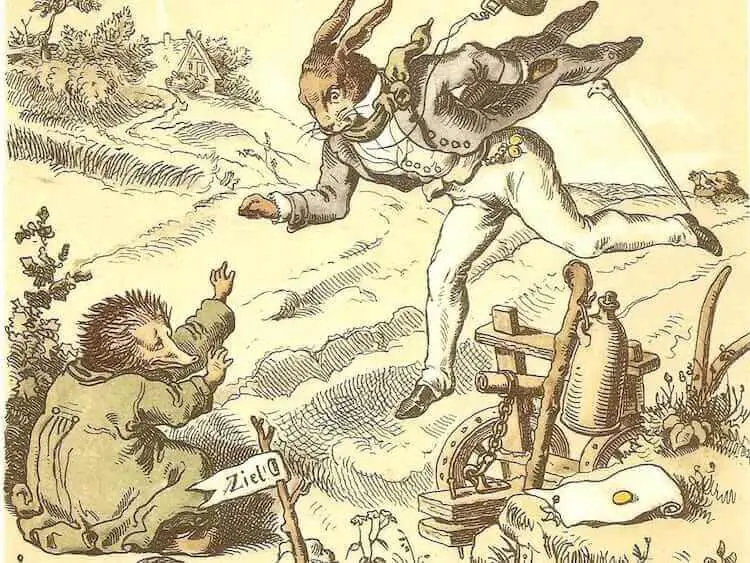
Crossing one of the town’s many bridges, we also discovered Buxtehude’s Culture Island. Every year since 2009, an artist has been given the opportunity of creating a statue that will float on the Este river for a full twelve months.
For 2022, Johannes Caspersen has sculpted a drifting “ice float” with a family of polar bears.

Buxtehude is, in fact, something like a centre for culture and modern art. Go here to download the routes of several “culture trails” that allow you to discover the different facets of a town whose history reaches back into the Middle Ages. The language selection button for the website is on the right (under “Suche”), and all the download brochures – links on the bottom of the page – are bilingual (German/English).
An exploration of Buxtehude’s Culture Trails is just one way of passing a pleasant day in the Altes Land. Unfortunately, we only had time for a quick first impression, but that was enough to round off a day which, eventually, had given us much to enjoy, although not quite in the way we had expected.
Instead of strolling between apple trees, we saw not-quite-unique wooden church towers, a tjalk and floating polar bears.
But isn’t the unexpected always the juiciest ingredient of any holiday experience?


